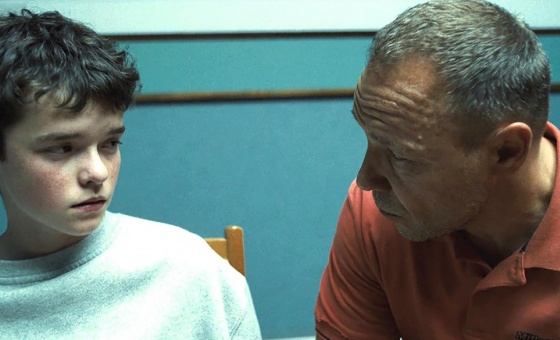This is the last article you can read this month
You can read more article this month
You can read more articles this month
Sorry your limit is up for this month
Reset on:
Please help support the Morning Star by subscribing here
THOSE with diagnosed and undiagnosed autism* who are experiencing mental health problems are usually first signposted to community services for help. But once in the psychiatric system, many find themselves diagnosed with borderline personality disorder (BPD**) with doctors failing to consider autism as a potential cause or contributory factor.
This is alarming as there is now increased awareness of the overlap between autism and so-called BPD traits, for example, black and white thinking, social anxiety and explosive emotions. Yet time and time again mental health professionals only look to their own speciality and “overshadow” by attributing all the symptoms to a BPD diagnosis.
The “sticky” BPD diagnosis can carry a heavy burden to those given this label. For those diagnosed as having the disorder, it can have a profound impact and can even override an autism diagnosis due to the stigma attached to it.
Sarah had been diagnosed as autistic since a child, but when she was in her teens, she experienced a serious sexual assault coupled with a housing problem and began to feel suicidal.
She was admitted to a psychiatric day hospital and invited to a care planning assessment. In the meeting eight professionals bombarded her with questions from all directions, including questions about the assault. As a result, Sarah asked whether she could answer such questions with only her keyworker present.
“The psychiatrist told me this was ‘manipulative behaviour’ and described me as ‘trying to split the team.’ I was told I had been diagnosed as BPD, even though they knew I was autistic — I had severe social anxiety and I’d never been in the mental health system before.”
This diagnosis had a drastic impact. One of the worst was when Sarah developed severe pain in her back. Multiple times this was dismissed as nothing, with doctors citing her BPD. Finally, Sarah took matters into her own hands, an X-ray pushed her reluctant GP to ask for an MRI.
“The fractured vertebrae were compressing my spinal cord,” Sarah said. “I’d been living for years with a broken back and it wasn’t investigated because of the BPD diagnosis.”
The original diagnosis of autism has now been revisited in Sarah’s case, due to the latest knowledge about women and autism and how autism traits and those of BPD can overlap.
The overlap between the two conditions has been confirmed by research carried out by a team from the Autism Research Centre at Cambridge University led by Dr Robert Dudas, a Visiting Researcher at the Department of Psychiatry.
Dudas said: “Clinicians need to be aware of this overlap to avoid further misdiagnosis.”
The problem is once someone has been labelled as BPD it’s very hard to get rid of it, even when there’s an autism diagnosis as well, with the stigma around this BPD label resulting in questionable behaviour by staff.
Charlie had an original diagnosis of autism but in 2017 when she was just 18 she found herself with a BPD diagnosis. As she knew she had been suffering from mental health difficulties because of recent traumatic events, she at first accepted this diagnosis. But as she began to learn more about it and more importantly suffer from the stigma due to it, she began to question whether this was the right diagnosis, particularly as she already had been assessed as autistic.
Some of the most disturbing experiences she had were within the NHS. On more than one occasion she had been told she was “manipulative” following a suicide attempt. She also often heard hospital staff discussing her, saying she was “attention-seeking” — all because the BPD diagnosis was on her file.
In addition, Charlie said: “I find that because of the BPD diagnosis, my autism is often ignored and my needs relating to it aren’t met.”
If this is what happens to people who are autistic, what happens to those with BPD who are not yet diagnosed as autistic?
Chloe experienced a traumatic event when her sister passed away in her arms. The trauma she suffered caused her to be suicidal, but without even being assessed she was given the diagnosis of BPD. Chloe found that because of the diagnosis, she was denied the inpatient treatment she required due to the hospital staff claiming that they didn’t admit those with personality disorders.
Her mother was forced to access private inpatient treatment for Chloe and it was during this admission she was assessed and diagnosed as autistic.
The community mental health team didn’t want to acknowledge this new diagnosis. After a battle, they reluctantly accepted it and referred her to the learning disabilities team, but this service bounced her back to the mental health team as they didn’t view her as having learning disabilities.
“There are no services available if you don’t have learning disabilities with the autism,” Chloe said. “To add to this, the mental health team is not trained or equipped to support autistic people long term.”
Chloe has since found out the BPD label was still on her file: “This is going to end up killing me, due to the stigma and people’s attitudes to it.”
That is why the BPD diagnosis is called “sticky” — as if it remains on files, it can then impact on the care received in hospital, or as we can see in the next two cases, prevent admission to hospital, even when in crisis.
When Caroline was initially diagnosed with BPD, she felt validated – she knew something wasn’t right and here was the therapist confirming that. But over the next few years, Caroline learnt that this was a highly stigmatised diagnosis. “I was repeatedly told that I was attention-seeking, manipulative and needed to ‘just grow up’ when I was in crisis and needed a short-term hospital admission. I was told borderlines don’t belong in hospital.”
Years later after a major workplace incident, Caroline had time to reflect: “I knew BPD didn’t explain what had happened that day. As time passed little bits of information were able to fit and I realised I was autistic.” This diagnosis was later confirmed by a clinical psychologist.
The diagnosis of BPD also came in an unorthodox way for Abbie, with her only noticing the addition of the diagnosis on a letter she was given. This hadn’t been discussed with her, nor had she undergone any assessment for BPD.
Abbie is very aware of the negative connotations of the BPD diagnosis: “I’ve been denied admission to psychiatric hospital and told ‘patients with BPD tend to deteriorate in terms of harming themselves while in hospital’ even though previous admission has shown this to not be the case for me. When I’ve been in crisis, I’ve been told that I wasn’t showing ‘acute mental illness’ so I couldn’t access acute or secondary mental health services.”
Recently she has begun to suspect that this diagnosis doesn’t adequately explain her experiences and wouldn’t properly address the support she required. As such, Abbie has self-referred herself for an autism assessment.
There’s a very real chance a significant number of those diagnosed with BPD are autistic or the autism is combined with another mental health problem, such as complex trauma or PTSD, but due to overshadowing by professionals are only diagnosed as having BPD.
It’s a positive sign that there’s an increased awareness of the mental health problems people with autism face – with initiatives such as the National Autistic Society teaming up with Mind to better deliver talking therapies.
But the plight of those diagnosed with BPD, instead of or alongside autism, is likely to impact on any mental health care they receive (or are excluded from) in the future.
*I’m using Autism rather than autism spectrum disorder (ASD) as this is the term used by most of those in the case studies.
*BPD is used rather than using Emotionally Unstable Personality Disorder (EUPD) for the same reason as above.
R.F.Hunt is a freelance journalist and author.
When life is difficult, Samaritans are here – day or night, 365 days a year. You can call them for free on 116 123, email them at [email protected], or visit samaritans.org to find your nearest branch.









